Clamor Meaning In The Bible: Noise and Rebellion
In the Bible, ‘clamor’ denotes vehement and disorderly expressions of emotion or pleas, often reflecting deep communal distress or fervent requests for divine intervention. In the Old Scripture, it represents collective cries for deliverance as seen with the Israelites in Exodus, highlighting a reliance on divine justice.
The New Scripture contrasts this by admonishing clamor, particularly in Ephesians, as disruptive to spiritual unity. Symbolically, clamor emphasizes human vulnerability and the quest for divine responsiveness, underscoring the need for harmonious and peaceful expressions of faith for spiritual growth and sanctification.
Insights into this term reveal layers of theological and communal depth.

Clamor Meaning in the Bible: Symbolism of Noise, Strife, and Spiritual Discipline
| Aspect | Explanation |
|---|---|
| Definition | Loud shouting, uproar, or emotional outburst |
| Biblical Usage | Represents anger, conflict, and emotional unrest |
| Key Verses | Ephesians 4:31 – “Let all bitterness and wrath and anger and clamor… be put away from you” |
| Symbolic Meaning | Signifies internal turmoil, lack of peace, or rebellion |
| Spiritual Lesson | Encourages peace, self-control, and emotional discipline |
Definition of Clamor
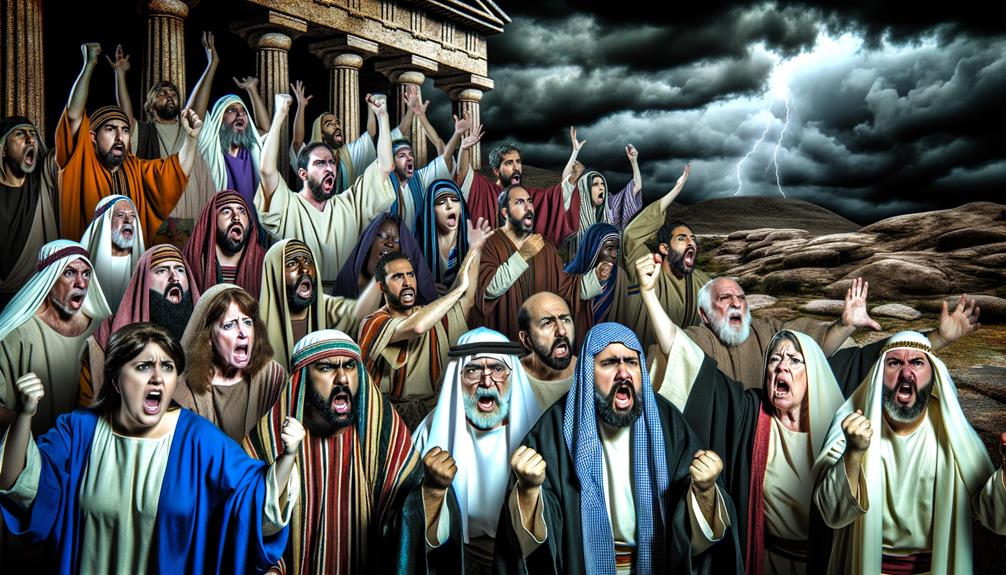
The term ‘clamor’ in biblical texts refers to a loud, vehement, and often disorderly expression of emotion or demand, typically associated with collective outcry or protest. This term encapsulates not just physical loudness but also the intensity of emotional and spiritual upheaval.
In theological contexts, ‘clamor’ is understood as a manifestation of deep-seated unrest or fervent plea, often directed towards divine intervention or justice. The biblical usage of ‘clamor’ serves to highlight moments of significant communal distress or fervent supplication, illustrating the human propensity for vocalizing collective grievances or desperate appeals.
This nuanced understanding of ‘clamor’ situates it as a potent symbol of communal emotional expression within the sacred texts, reflecting both human vulnerability and the quest for divine responsiveness.
Clamor in Old Testament
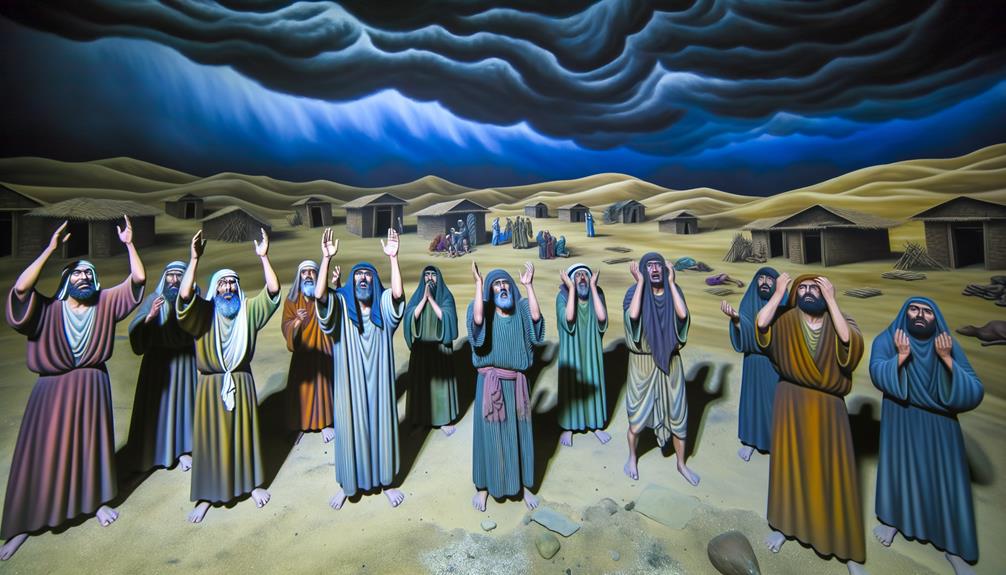
In the Old Scriptures, clamor frequently emerges as a powerful motif representing collective cries for deliverance, justice, and divine intervention.
This motif is vividly exemplified in the Exodus narrative, where the Israelites’ desperate outcry under Egyptian bondage reaches God’s ears, prompting their liberation (Exodus 2:23-25).
Similarly, the Psalms often depict clamor as a heartfelt plea for divine assistance against adversaries (Psalm 18:6).
This recurring theme underscores the communal aspect of clamor, reflecting the Israelites’ reliance on divine justice and intervention.
The prophetic literature further amplifies this by portraying clamor as both a cry for help and a call to repentance, thereby encapsulating the dynamic relationship between human desperation and divine responsiveness within the Old Covenant context.
Clamor in New Testament
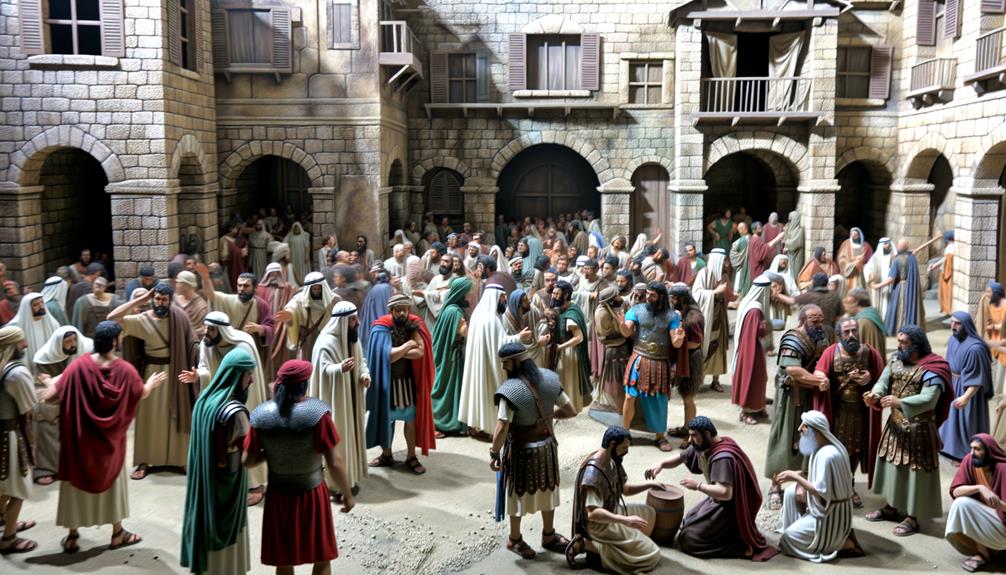
In the New Covenant, the term ‘clamor’ primarily signifies a loud and tumultuous outcry, often associated with discord and unrighteous fervor.
This concept carries profound spiritual implications, as it is frequently admonished by apostolic teachings to foster harmony within the Christian community.
Examining instances of clamor, such as in Ephesians 4:31 and Acts 23:9, elucidates its detrimental impact on spiritual unity and the ethical exhortations against it.
Biblical Clamor Definition
How is the term ‘clamor‘ understood within the context of the New Covenant writings, particularly in relation to its implications for Christian conduct and community dynamics?
In the New Covenant, ‘clamor’ is often translated from the Greek word ‘krauge,’ which denotes loud outcries, tumult, or vociferous expressions of anger.
Ephesians 4:31 admonishes believers to ‘put away all bitterness and wrath and anger and clamor and slander,’ emphasizing that such behaviors are contrary to the ethos of Christian community life.
This directive underscores the importance of maintaining harmony and edification within the ecclesial body.
Clamor, therefore, signifies disruptive and discordant speech that undermines unity and peace, reflecting broader ethical exhortations towards gentleness, patience, and mutual forgiveness within the Christian fellowship.
Clamor’s Spiritual Implications
Understanding the spiritual implications of clamor within the New Covenant context necessitates an exploration of how such disruptive behaviors are antithetical to the cultivation of a Christ-centered community.
The term ‘clamor’ in the New Agreement, particularly in Ephesians 4:31, signifies loud, contentious outbursts that disrupt harmony and impede spiritual growth.
Clamor undermines the unity Paul exhorts believers to maintain, contrasting sharply with the fruits of the Spirit, such as peace and gentleness (Galatians 5:22-23).
This discordant behavior hinders communal sanctification and obstructs the divine mandate for believers to embody Christ’s love and humility.
Consequently, clamor is not merely a social ill but a spiritual obstacle that believers must conscientiously eschew for holistic spiritual maturity.
Examples of Clamor
Several instances of clamor in the New Scripture illustrate its detrimental impact on the early Christian communities and underscore the apostolic exhortations against such behavior.
The apostle Paul, in particular, addresses clamor to maintain ecclesiastical harmony and spiritual integrity. Notable examples include:
- Ephesians 4:31: Paul admonishes believers to put away ‘all bitterness, wrath, anger, clamor, and slander,’ emphasizing a community grounded in kindness and forgiveness.
- Acts 23:9: The scribes and Pharisees engage in loud disputes, embodying clamor that disrupts judicial proceedings and undermines reasoned discourse.
- James 4:1-2: James highlights quarrels and conflicts within the community, linking clamor to unmet desires and wrongful passions, which impede spiritual growth.
These instances reveal the theological significance of clamor and its adverse effects on communal sanctity.
Symbolism of Clamor
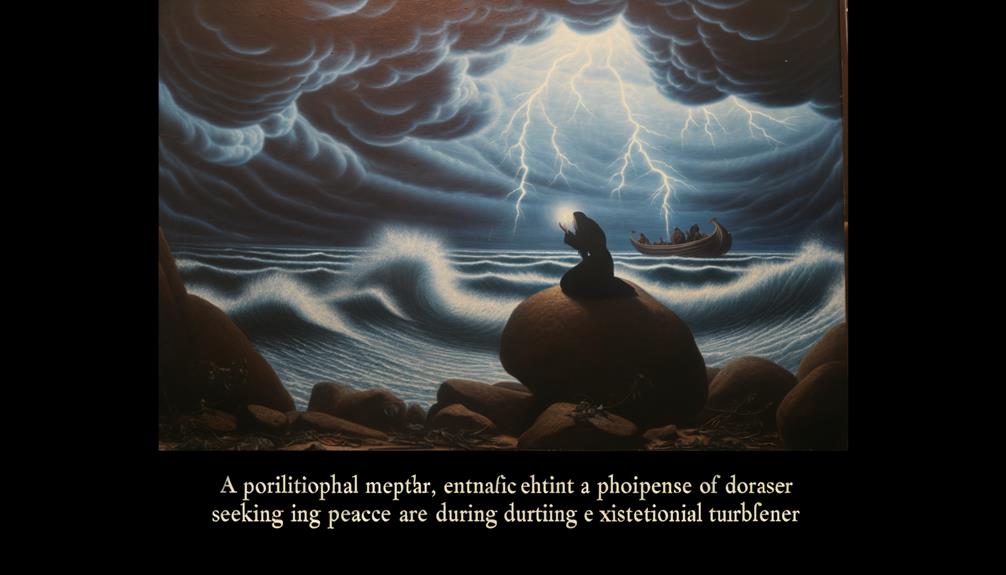
The symbolism of clamor in the Bible is multifaceted, encompassing its biblical context, representation in narratives, and spiritual implications.
In the biblical context, clamor often signifies a collective outcry that reflects the moral and spiritual state of a community.
Through various narratives, such as the cries of the Israelites in bondage or the tumultuous scenes of judgment, clamor symbolizes both a plea for divine intervention and a manifestation of societal unrest.
This symbolism carries profound spiritual implications for understanding divine-human interaction.
Biblical Context of Clamor
In biblical literature, clamor often symbolizes a profound outcry of distress, desperation, or fervent petition directed towards God. This symbolic representation serves as an important theological motif, illustrating human reliance on divine intervention.
Several key aspects highlight the significance of clamor within the biblical context:
- Petition for Deliverance: Clamor often underscores a plea for divine rescue, reflecting the believer’s trust in God’s power to save.
- Expression of Anguish: It embodies the raw, unfiltered expression of emotional or spiritual suffering, portraying a direct and honest communication with God.
- Call for Justice: Clamor can signify a cry for righteousness and divine justice, emphasizing the biblical theme of God as the ultimate judge and protector of the oppressed.
These elements collectively deepen the understanding of clamor as a multifaceted symbol within biblical texts.
Clamor in Biblical Narratives
A profound exploration of biblical narratives reveals clamor as a potent symbol of humanity’s earnest appeals to the divine during moments of crisis and need.
This symbolic representation is vividly illustrated in episodes such as the Israelites’ groaning under Egyptian bondage (Exodus 2:23-24) and the psalmists’ fervent cries for deliverance (Psalm 18:6).
These instances underscore clamor as a manifestation of human desperation, calling out for God’s intervention.
Theologically, clamor represents the raw, unfiltered emotions of supplicants, laying bare their vulnerabilities before the Almighty.
This auditory symbol consequently encapsulates the profound depths of human reliance on divine mercy and justice, illuminating the dynamic interplay between human suffering and divine responsiveness recorded in Scripture.
Spiritual Implications of Clamor
Within the spiritual context, clamor serves as an evocative metaphor for the profound and often tumultuous communion between humanity and the divine. This metaphorical clamor signifies several key aspects of spiritual life:
- Divine Intervention: Clamor often precedes or accompanies divine intervention, symbolizing the urgent cry for God’s presence and action.
- Inner Turmoil: It reflects the inner turmoil and spiritual struggles faced by believers, highlighting their desperate longing for divine guidance and peace.
- Collective Worship: Clamor can also represent the collective worship and outcry of a faith community, uniting voices in a powerful declaration of faith and dependency on God.
These elements underscore clamor’s multifaceted role in illustrating the dynamic and fervent nature of spiritual life.
Moral Lessons From Clamor
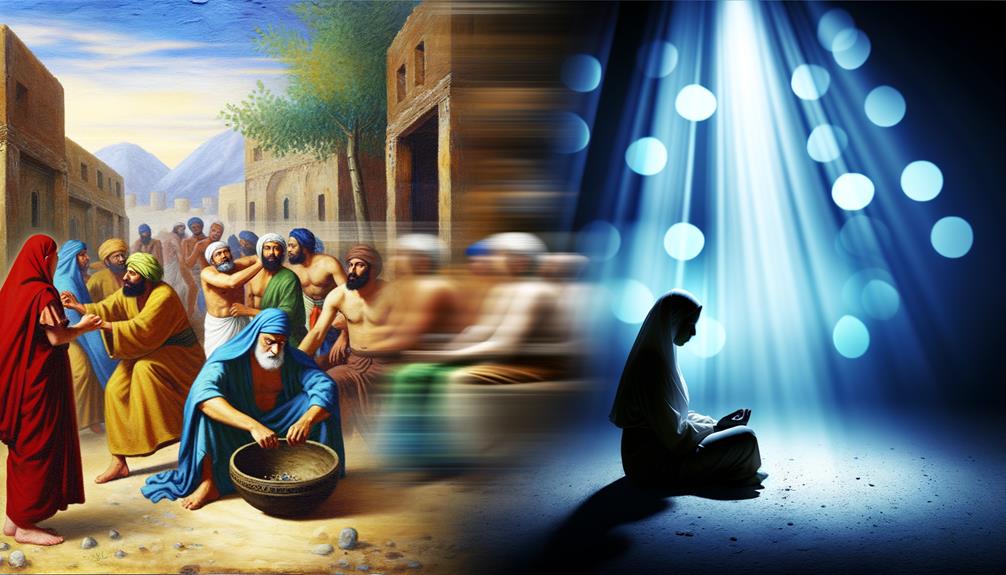
Examining the biblical concept of clamor reveals profound moral lessons about the consequences of discord and the importance of maintaining peace and unity within a community.
In Ephesians 4:31, the Apostle Paul admonishes believers to put away all clamor, linking it to bitterness, wrath, and malice. This directive underscores the destructive nature of divisive speech, which can fracture communal harmony and impede spiritual growth.
Additionally, Proverbs 15:1 highlights that a soft answer can turn away wrath, suggesting that restraint and gentle communication foster reconciliation.
Through these scriptural teachings, it becomes evident that clamor, as a manifestation of unrest, undermines the cohesion and moral fabric of a community, while promoting peace and unity aligns with divine intentions for human relationships.
Clamor in Worship
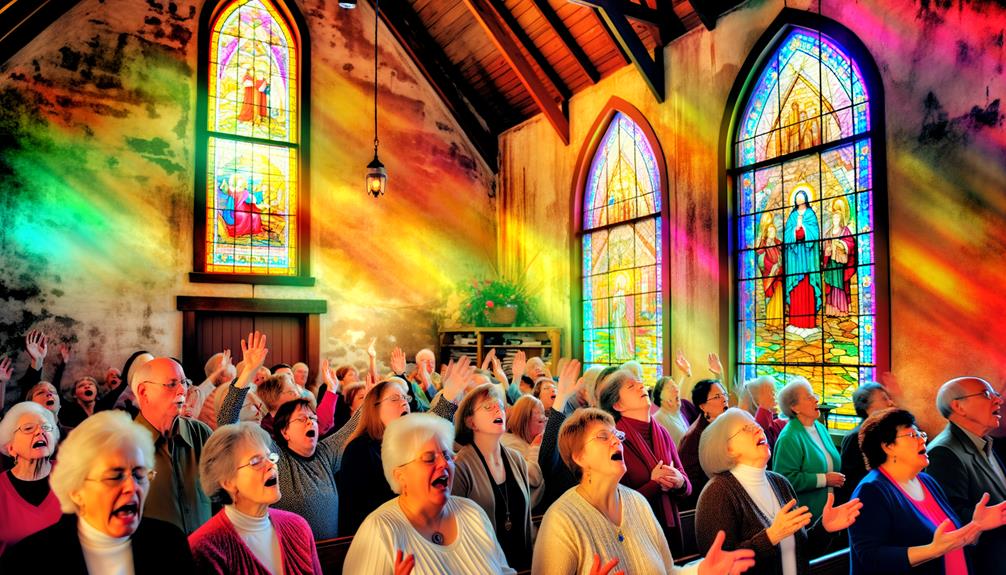
Understanding clamor in the context of worship necessitates an exploration of how noise and disorder can disrupt the reverence and solemnity intended for communal gatherings in biblical teachings.
The Bible underscores the importance of maintaining a sacred atmosphere during worship, where the focus is on divine connection and spiritual introspection.
Disruptive clamor in worship settings can:
- Hinder Spiritual Reflection: Excessive noise can prevent individuals from engaging in personal and communal meditation.
- Obstruct Communication: It can impair the clarity of prayers, sermons, and scriptural readings.
- Diminish Reverence: Persistent disorder can erode the sacredness of the space, affecting the collective sense of holiness.
Biblical teachings advocate for orderliness, emphasizing the need for an environment conducive to worship.
Modern Applications

In contemporary religious contexts, the concept of clamor continues to hold significant relevance, particularly in how it influences the sanctity and functionality of worship practices.
Theologically, clamor is often viewed as disruptive noise that detracts from spiritual focus and communal harmony. Modern ecclesial settings apply this understanding by promoting an atmosphere of reverence and order during services, thereby minimizing distractions.
This principle extends to various forms of worship, including prayer, song, and preaching. By recognizing and mitigating clamor, religious communities aim to foster a more conducive environment for spiritual growth and divine encounters.
In addition, digital platforms for worship also adapt this concept, regulating online interactions to maintain decorum and reverence, ensuring the sacredness of the worship experience remains intact.
Conclusion
In biblical contexts, clamor represents a powerful, often disruptive outcry, much like a tempest unsettling calm waters.
Its presence in both the Old and New Scriptures serves as a metaphor for human emotions and societal tumults.
Through its symbolic and literal usage, clamor underscores moral lessons and the importance of righteous conduct.
By understanding its implications, modern readers can apply these insights to contemporary worship and ethical practices, fostering a deeper spiritual and communal harmony.






